What's New
Displaying results 4451 - 4460 of 4914

Resource | Publications,
The aim of carrying out National Behavioural Surveillance Survey (BSS) 2006 was to assess current risk behaviour in specific population groups in India and to measure behavioural changes from BSS 2001 to BSS 2006. The present report details the observations of the National BSS 2006 among the FSWs and their clients, which was conducted in all states and union territories of the country.
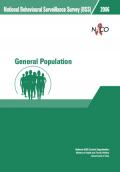
Resource | Publications,
The aim of carrying out the National Behavioural Surveillance Survey (BSS) 2006 was to assess current risk behaviour in specific population groups in India and to measure behavioural changes from BSS 2001 to BSS 2006. The present report details the observations of the National BSS 2006 among the general population, which was conducted in all states and union territories of the country.
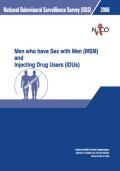
Resource | Publications,
The aim of carrying out the National Behavioural Surveillance Survey (BSS) was to assess current risk behaviour in specific population groups in India and to develop a database to measure behavioural changes from National BSS 2001 to National BSS 2006. The present report would provide the detailed findings of BSS 2006 conducted among two high-risk population groups of IDUs and MSM, about their awareness, knowledge, attitude, and behaviour with regards to STD/HIV/AIDS.
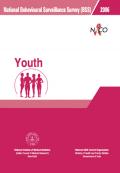
Resource | Publications,
Behavioural Surveillance Surveys (BSS) are internationally standardised tools used for understanding the knowledge, attitude, and behaviour of populations. Undertaking BSS among youth is an important effort by NACO and UNICEF to monitor changes in behavioural aspects of young people who are vulnerable to HIV infection.
The study aims to provide a baseline for the interventions among the young people supported by NACO and UNICEF. The study will be repeated periodically for trend analysis, which will indicate the impact of the interventions as well as generate invaluable information about the behaviour and lifestyle of young people in the country.

Resource | Fact Sheets,
The estimates and data provided in the following tables relate to 2005 unless stated otherwise. These estimates have been produced and compiled by UNAIDS/WHO.
The evidence of HIV was first documented in Chennai in southern India in 1986. From then until March 2004, 68,809 AIDS cases have been reported to the National AIDS Control Organization. Heterosexual route is the predominant mode of transmission, followed by injecting drug use.
Nationwide, annual HIV sentinel surveillance (HSS) was started in 1998 and so far six rounds have been completed. The numbers of ANC sentinel sites have increased considerably over the years, however, the vulnerable population groups such as MSMs, IDUs and CSWs remain largely underrepresented.

Resource | Publications,
In Cambodia, sentinel surveillance data have been used to estimate national HIV prevalence and project trends in HIV and AIDS incidence and mortality. In 2006, Cambodia conducted its tenth round of HIV sentinel surveillance (HSS) in 22 of its 24 provinces and municipalities. The two sentinel groups surveyed were brothel-based female sex workers (FSWs) and pregnant women attending antenatal care (ANC) clinics.

Resource | Fact Sheets,
As gender equality improves, the prevalence of violence against women is lower. Data available shows the inverse relationship between gender equality and violence by an intimate partner. This is borne out for both physical and sexual forms of abuse. Countries with greater equality between women and men tend to have lower levels of violence against women, based on the leading global indices for gender equality. These measure equality based on: life expectancy; sex ratio at birth; adult literacy; primary, secondary and tertiary education enrollment rates; participation in the formal labour force; estimated earned income; wage equality; shares of seats in legislative, ministerial and senior political positions; and shares in management and technical positions.
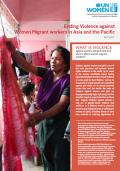
Resource | Fact Sheets,
Violence against women and girls is one of the most pervasive and systemic human rights violations in the world. Up to seven in ten women worldwide report having experienced physical and/or sexual violence at some point in their lifetime, and up to 50 percent of sexual assaults are committed against girls under 16. In several countries across Asia and the Pacific the rates of violence against women and girls are disproportionately high, indicating that the situation requires urgent attention in these two regions.
Violence against women is 'any act of gender-based violence that results in, or is likely to result in, physical, sexual or psychological harm or suffering to women [or girls], including threats of such acts, coercion or arbitrary deprivation of liberty, whether occurring in public or in private life.'
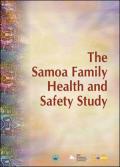
Resource | Publications,
The Samoa Family Health and Safety Study (SFHSS) is a component of the larger Pacific Multi-site Study of the Effects of Violence Against Women on Family Health and Safety, which is a joint research initiative of the Secretariat of the Pacific Community (SPC) and the United Nations Population Fund (UNFPA).
The Multi-site study follows the methodology of the World Health Organization (WHO) Multicountry Study of Women's Health and Domestic Violence, and uses questionnaires based on those developed by WHO.

Resource | Publications,
On the first World TB Day of the new millennium, ministerial representatives of the 20 countries carrying 80 percent of the global tuberculosis (TB) burden adopted the Amsterdam Declaration to Stop TB. By adopting the Declaration, these governments pledged to take bold new steps in addressing the TB epidemic in their countries and affirmed their commitment to “implement, monitor and evaluate” their national TB programs according to the TB con- trol strategy recommended by the World Health Organization (WHO).





